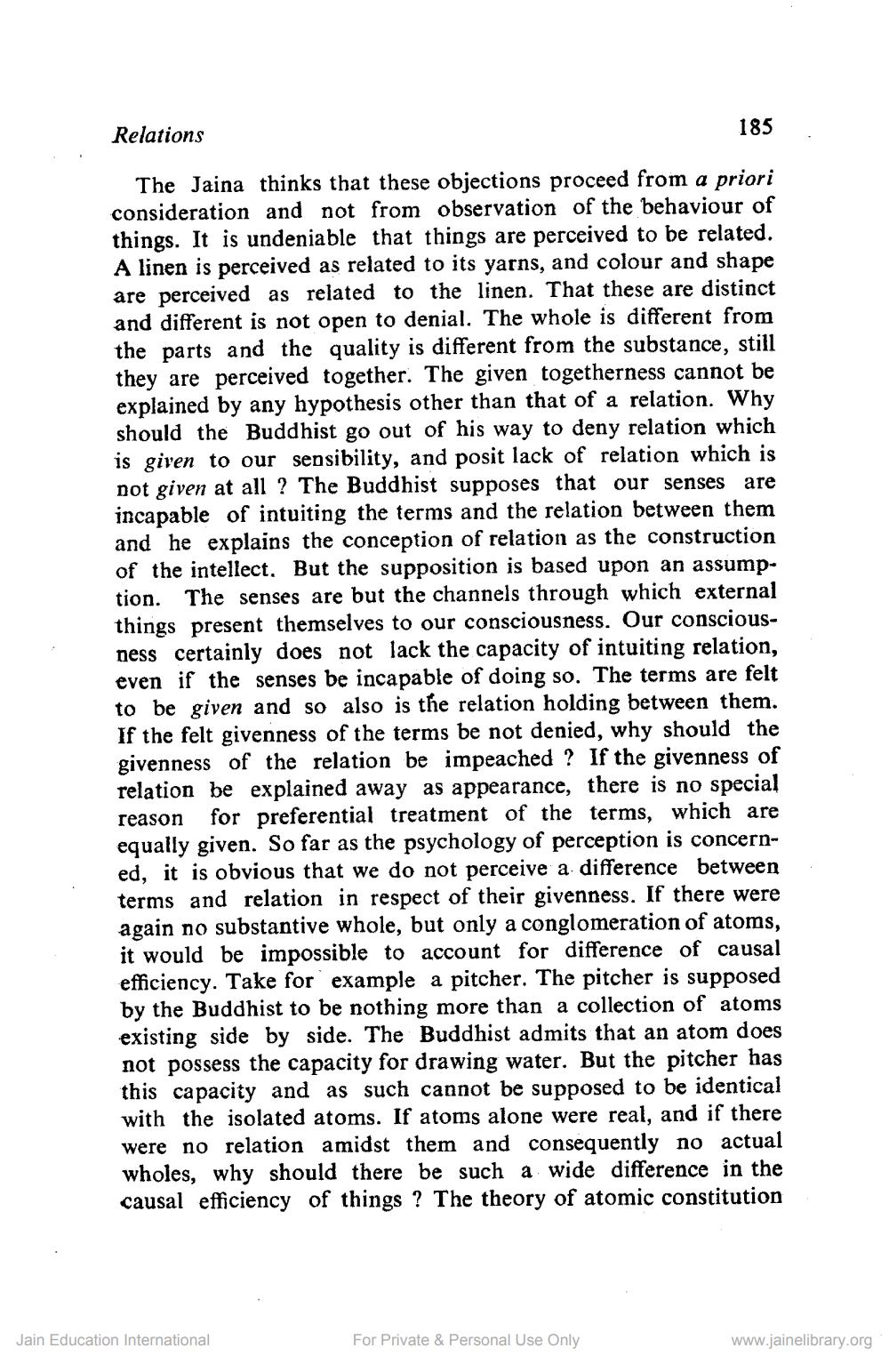________________
Relations
185
The Jaina thinks that these objections proceed from a priori consideration and not from observation of the behaviour of things. It is undeniable that things are perceived to be related. A linen is perceived as related to its yarns, and colour and shape are perceived as related to the linen. That these are distinct and different is not open to denial. The whole is different from the parts and the quality is different from the substance, still they are perceived together. The given togetherness cannot be explained by any hypothesis other than that of a relation. Why should the Buddhist go out of his way to deny relation which is given to our sensibility, and posit lack of relation which is not given at all ? The Buddhist supposes that our senses are incapable of intuiting the terms and the relation between them and he explains the conception of relation as the construction of the intellect. But the supposition is based upon an assumption. The senses are but the channels through which external things present themselves to our consciousness. Our consciousness certainly does not lack the capacity of intuiting relation, even if the senses be incapable of doing so. The terms are felt to be given and so also is the relation holding between them. If the felt givenness of the terms be not denied, why should the givenness of the relation be impeached ? If the givenness of relation be explained away as appearance, there is no special reason for preferential treatment of the terms, which are equally given. So far as the psychology of perception is concerned, it is obvious that we do not perceive a difference between terms and relation in respect of their givenness. If there were again no substantive whole, but only a conglomeration of atoms, it would be impossible to account for difference of causal efficiency. Take for example a pitcher. The pitcher is supposed by the Buddhist to be nothing more than a collection of atoms existing side by side. The Buddhist admits that an atom does not possess the capacity for drawing water. But the pitcher has this capacity and as such cannot be supposed to be identical with the isolated atoms. If atoms alone were real, and if there were no relation amidst them and consequently no actual wholes, why should there be such a wide difference in the causal efficiency of things ? The theory of atomic constitution
Jain Education International
For Private & Personal Use Only
www.jainelibrary.org




